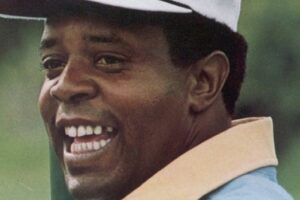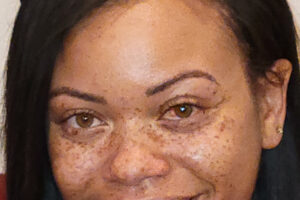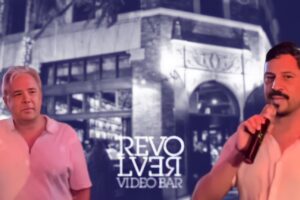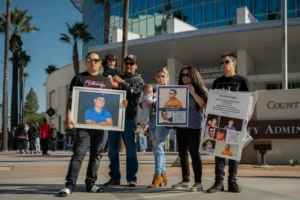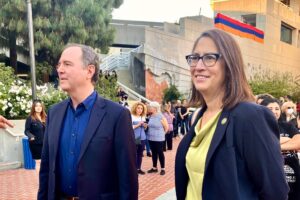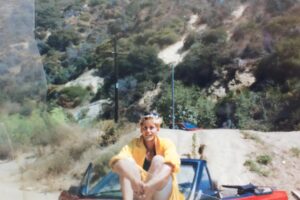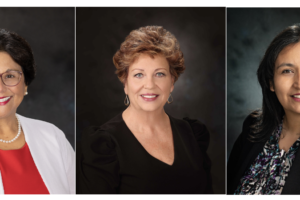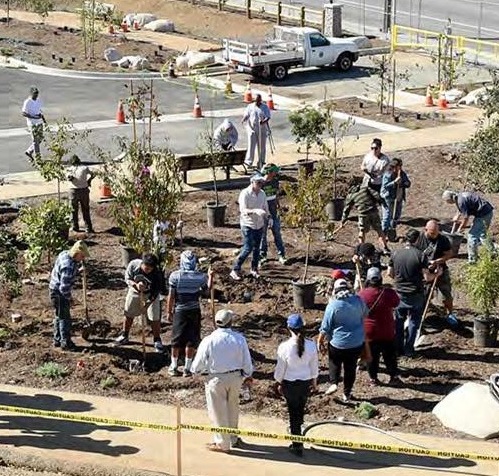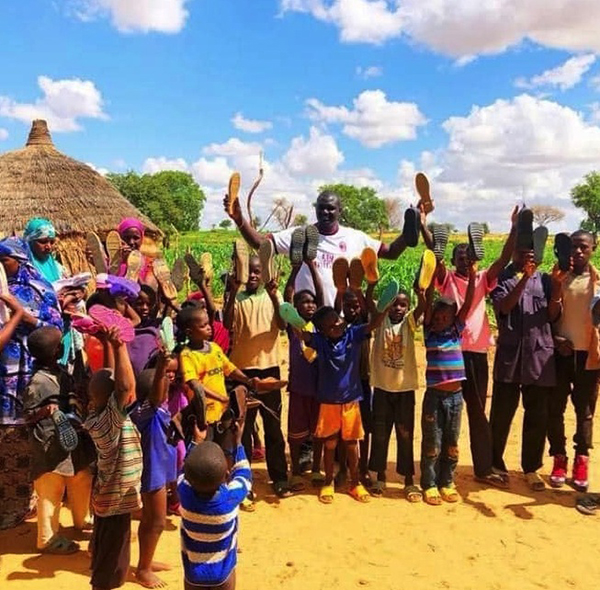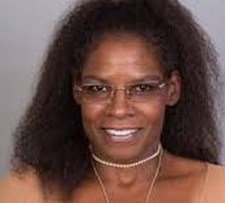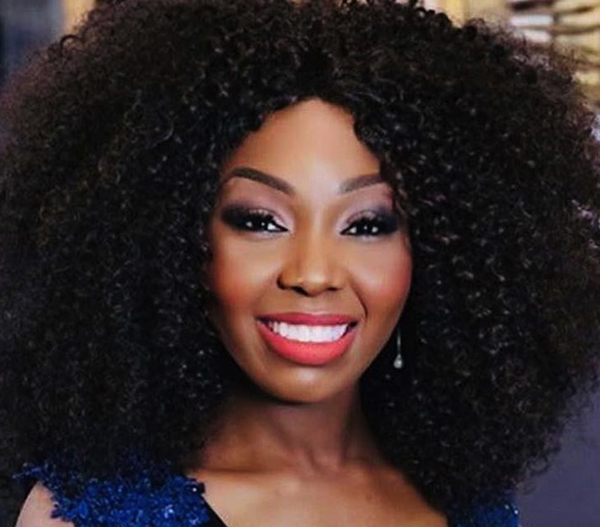MAKING A DIFFERENCE
By Darlene Donloe
Contributing Writer
Fallen Fruit is an L.A.-based art collaboration originally conceived by artists David Burns, Matias Viegener and Austin Young.
The artwork they create cross disciplines and material and often includes fruit and/or fruit trees.
A contemporary art collective, the Fallen Fruit project makes art installations, public art and plants fruit trees in public spaces for everyone to share.
Burns said the project uses cartography and geography as a tool to create serialized and site-specific works of art that often embrace public participation.
The work of Fallen Fruit includes photographic portraits, experimental documentary videos, public art installations and exhibition projects. Using fruit (and public spaces and public archives) as a method of interrogating the familiar, Burns said Fallen Fruit investigates urban space, ideas of neighborhood and new forms of citizenship
Since 2013, Burns and Young have continued the collaborative work, some of which includes photography developed by mapping fruit trees growing on or over public property in Los Angeles.
Together the two artists have focused on site-specific projects and art installations working on the margins of public and private space. They pride themselves on working with concepts of community, local history, and ecology to inform the materials for each project.
In an artist statement, they said, “We respond to the existing architecture and are mindful about the visitor experience.”
In the past, Burns and Young have collaborated with cities, county parks, cultural centers, museums, architects, landscape architects and more.
According to Burns and Young, their public artwork with fruit trees helped change local Los Angeles policies to allow fruit in public spaces and parks.
From the work they do, Burns and Young have learned that fruit trees and collaborating with local residents are good choices for creating urban ecological healthy artworks that exist in the public realm.
Burns, 51, and Young’s partnership happened quite by happenstance.
They met 20 years ago while both were living in the same Silver Lake neighborhood.
It turned out to be a fortuitous meeting that would prove to be fruitful in more ways than one.
Hitting it off immediately, Burns asked Young whether he would be interested in helping him on an art project.
“We had fun doing it,” Burns said. “One thing led to another. We certainly didn’t think this would go on for 16 years. The fun-nest part is that you might have some grand idea of what’s possible. The fun part is finding the way.”
Fallen Fruit uses fruit as a common denominator to change the way someone sees the world.
The project was conceived in 2004 after Burns and Young responded to a call for submissions for a small magazine.
“They asked the question, ‘if it’s possible to use the agency of activism without opposition?’” said Burns, who grew up in Culver City. “They asked, ‘is it possible to make something in the world that has that grassroots, neighborhood, let’s change the world attitude that doesn’t make anyone in the world wrong.’ We said, ‘well we don’t know the answer.’”
Burns said they agreed the answer had “to be something we knew.”
“It had to be between our three houses,” Burns said. “We started walking. We saw trees, fruit trees hanging over fences. We counted 100 trees in five blocks that had fruit that wasn’t being picked. It was organic fruit that was going to waste. We called the text, Fallen Fruit.”
Burns and Young submitted their work.
“The magazine published it and six weeks later we got a phone call from NPR, the California Assembly, and several other outlets,” Burns said. “It carried on from that.”
Ever since then, the artists have been on a “crazy” journey all over the world.
The Fallen Fruit influence has no boundaries. Recent projects with the Wexner Center for the Arts became two new city parks for Columbus, Ohio. Their work in New Orleans created two inner-city sustainable landmarks (fruit parks) dedicated to promoting a healthy lifestyle and strengthening the community.
The Stoneview Nature Center in Los Angeles County has been recognized with eight awards.
“We live in divided times,” said Young, who works primarily in photography and video. “People are polarized. We looked at common bonds and fruit as an object that no one can disagree on, but can enjoy. We all have stories and recipes. When we do our project, we find it’s a way a community can grow close.”
Burns, who received his bachelor’s degree in fine arts from CalArts, said the Fallen Fruit project is founded on a core idea of sharing.
“Honestly it makes me emotional,” Burns said. “What if we didn’t have to worry about food? What would people do if they didn’t have to worry about food and eating well?
“I wonder about that. It’s not that complicated. If food isn’t based on geography anymore, we can do all kinds of things. Sharing without wanting things back is the core.”
“I’ve always thought that,” said Young, who recently completed a feature-length documentary, “Hadda Brooks, This is My Life,” about torch singer, Hadda Brooks. “I like the golden rule. What you put out there is what you get back in the world. I hope that people see us as an interesting way to express art. We are making artwork that encourages people and gives people an easy way to share. Just plant a fruit tree.”
Burns insists fruit has the capacity to change the world.
“What has happened is that it changed the way I think about people in the world,” Burns said. “Fruit is a very strange thing. It’s a subject and an object at the same time. It’s aesthetic. When you think about it, a banana is a fruit and a shape. The richest person or the poorest are eating the same fruit. We can be simple and connected.”
“When we started the project, we were in touch with people’s personal stories,” Young said. “They all have a story about an apple tree in the neighborhood. The more we did our project, you start to realize the depth and meaning fruit has in our culture and in the world culture. Think about how fruit has moved through the world. Fruit has led to a process of discovery and a way of thinking about the world I didn’t have before.”
Art has been described as the expression or application of human creative skill and imagination, typically in a visual form such as painting or sculpture, producing works to be appreciated primarily for their beauty or emotional power.
“To me the prerequisite for something to be art — whether music or writing — what I understand is the thing that must happen is it must invoke or change the way you understand something you think you already know,” Burns said. “That’s a basic thing. Art pushes what you think beauty can be.”
“Working with fruit, it’s interesting to make art about fruit because I think we have come more in touch with core messages of beauty and its importance,” Young added. “When we make work we are consciously making acts of beauty. There is not enough work for me that’s adding a gift to the world. It’s really radical to do a project about beauty during a time right now.”
Since its inception, Burns and Young said their intent and approach to Fallen Fruit has changed over the years.
“It has absolutely changed,” Young said. “We’re definitely more focused on endless orchard projects. There is a world call to action to plant a fruit tree to share with your neighborhoods. We are dealing with immersive art installations. We have become more focused. We are clear on fruit being a gift and the meaning of the gift.”
Young, too, loves the art of creating.
“Life is an active creativity,” he said. “Some of us get caught up in creating. We are consciously creating something beautiful.”
Wherever they exhibit their art projects, Burns and Young want to get the message across that “language is important.”
“How you experience your neighborhood and your own place is important,” Burns said. “We ask people to only take what they need. That’s for all things. The next phase is to say ‘hi’ to strangers. Recognize someone. It’s simple and kind. I see you. Be a friend through life. Go by foot. Take your time. Share your fruit.”
“Making a Difference” is a weekly feature profiling organizations that are serving their communities. To propose a “Making a Difference” profile, send an email to newsroom@wavepublication.com.
Darlene Donloe is a freelance reporter for Wave Newspapers who covers South Los Angeles. She can be reached at ddonloe@gmail.com.

